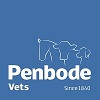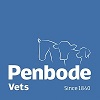Transition cow
This period is particularly stressful and the cows are at high risk of developing problems during this period. We offer a thorough, structured approach to assess the all around health of your cows at this time and identify problems early on.
The transition period, is the 60 days before and 30 days after calving.
The period from drying off through calving to lactation is a high-risk time for the dairy cow and can be some of the most stressful days in the cow calendar.
The next lactation starts at the end of the previous one.
Why the transition period matters
Managing cows correctly during the transition period is one of the most important factors for overall farm success. The calorie needs of a milking cow are massive, especially compared to a dry cow.
· Within the two days after a cow calves, the energy needs of that cow more than double
· The metabolic stress associated with the increased energy demand can be dramatic
· How the cow handles this stress and moves through the transition period influences her production, health, ability to become pregnant again and ability to remain in the herd.
During the transition period, nutrient requirements increase to support foetal growth and colostrum and milk production. Dairy cows are at greatest risk of developing diseases and conditions leading to involuntary culling during this time. Monitoring the transition dairy cow is important to recognize changes in performance.
The first stage in this period is correct preparation and drying off. Cows should be dried off at a body condition score of 2.5 – 3, to ensure cows are not too fat or thin at calving risking increases in ketosis and milk fever.
For selective dry cow therapy cows should be selected carefully and dried off accordingly, separate to milking and allowed to stand in a clean pen for at least 30 mins before returning to field or housing.
Correct housing and management of dry cows is extremely important. Cows should have enough cubicles, space, food and water access to maximise intake without hierarchical interference and bullying.
Calving pens should be clean, with deep straw bedding and at least 12m2 per cow. Johnes cows should be clearly marked and calved in a separate area. Cleanliness in the dry and calving period is imperative for prevention of mastitis and also to stop the risk of spreading Johnes disease.
Once calved is it imperative that cows have access at all times to good-quality feed that meets their nutritional requirements, whether in pens or yards.
· Receive the lactating cow diet immediately from the onset of calving
· Have at least 0.6m feed space/ cow
· Have access to potable water at all times
· Be observed for signs of mastitis or other diseases in the first 24 hours after calving
· Have each quarter stripped within four hours of calving to check for mastitis
· Be milked for the first time within 24 hours of calving
Fresh cows should be mixed in with lactating cows and monitored closely in the first 30 days of lactation – the key period for transition diseases and to maximise peak lactation yield.
Farm targets for transition diseases are
· Less than 5% of cows should develop milk fever in any 12-month period
· Less than 5% of cows should be diagnosed with a Left Displaced Abomasum (LDA) in the first two weeks of lactation during the last 12 months
· No more than one cow in every 12 should have a clinical mastitis case in the first 30
If your farm falls outside these targets speak to your routine vet.

